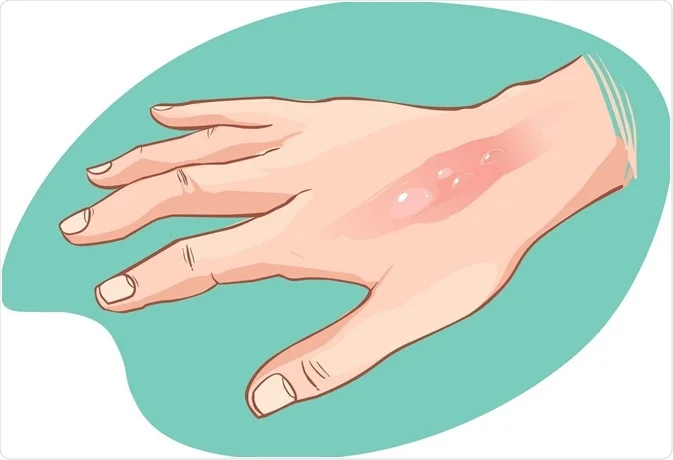Contents
- 1 1. Understand Myopia
- 2 2. Regular Eye Examinations
- 3 3. Limit Prolonged Near Work
- 4 4. Encourage Outdoor Activities
- 5 5. Maintain Proper Lighting
- 6 6. Adopt Correct Posture
- 7 7. Promote a Healthy Diet
- 8 8. Consider Myopia Control Options
- 9 9. Promote Good Vision Habits
- 10 10. Monitor and Manage Existing Myopia
- 11 11. Be Aware of Genetic Factors
- 12 12. Avoid Excessive Screen Time
- 13 13. Practice Eye Exercises
- 14 Conclusion
ozeku.com – Myopia, commonly known as nearsightedness, is a visual condition where distant objects appear blurry while close objects can be seen clearly. It is increasingly prevalent worldwide, driven by genetic and environmental factors. Fortunately, there are several strategies to help prevent or slow down the progression of myopia. This article explores these preventive measures and provides practical advice to help maintain optimal eye health.
Rad more: Tips Bermain The Finals: Panduan untuk Menjadi Juara di Arena
1. Understand Myopia
Before delving into preventive measures, it is crucial to understand myopia. It occurs when the eye is too long relative to its focusing power, or the cornea is too curved, causing light rays to focus in front of the retina. This leads to blurred vision for distant objects. Myopia often develops in childhood and can worsen with age.
Read More: Tips Bermain FIFA Mobile: Panduan Lengkap untuk Menjadi Juara
2. Regular Eye Examinations
One of the most effective ways to prevent myopia is to have regular eye exams. Early detection of vision problems allows for timely intervention, which can slow the progression of myopia. Eye care professionals can identify early signs of myopia and recommend corrective measures or lifestyle changes to mitigate its impact.
Read More: Cara Menaikkan Page Ranking: Panduan Lengkap
3. Limit Prolonged Near Work
Excessive close-up activities, such as reading, using smartphones, and computer work, can strain the eyes and contribute to myopia. To reduce the risk, follow the 20-20-20 rule: every 20 minutes, take a 20-second break and look at something 20 feet away. This practice helps relax the eye muscles and reduce strain.
Read More: CTR SEO: Meningkatkan Click-Through Rate untuk Kesuksesan SEO
4. Encourage Outdoor Activities
Spending time outdoors has been shown to have a protective effect against myopia. Natural light exposure and the opportunity to focus on distant objects are beneficial for eye health. Aim for at least two hours of outdoor activity per day. Activities such as playing sports, hiking, or simply walking in a park can be beneficial.
5. Maintain Proper Lighting

Good lighting is essential for reducing eye strain during near work. Ensure that your reading or working area is well-lit, preferably with natural light or a quality desk lamp that reduces glare. Avoid reading or working in dimly lit environments, as this can force your eyes to work harder and increase the risk of myopia.
6. Adopt Correct Posture
Maintaining proper posture while reading or using electronic devices can help prevent myopia. Hold reading materials or screens at a comfortable distance—ideally 16-18 inches from your eyes—and position them at or slightly below eye level. Sit with your back straight and avoid slouching, which can strain the eyes and contribute to myopia.
7. Promote a Healthy Diet
A balanced diet rich in vitamins and nutrients supports overall eye health. Include foods high in antioxidants, such as leafy greens, carrots, and berries, which can help protect the eyes from oxidative stress. Omega-3 fatty acids, found in fish and flaxseeds, are also beneficial for maintaining healthy eyes.
8. Consider Myopia Control Options
For children at risk of developing or progressing myopia, several control options may be effective. These include:
- Atropine Eye Drops: Low-dose atropine drops can slow myopia progression in children. These drops are usually prescribed by an eye care professional.
- Orthokeratology (Ortho-K): This involves wearing specially designed contact lenses overnight to temporarily reshape the cornea, which can slow myopia progression.
- Multifocal Contact Lenses: These lenses have different zones for distance and near vision, which can help manage myopia in children.
Discuss these options with an eye care professional to determine the best approach based on individual needs.
9. Promote Good Vision Habits
Educating children about good vision habits is essential in preventing myopia. Encourage them to take regular breaks from screens and engage in outdoor activities. Teaching them to follow the 20-20-20 rule and maintain proper reading posture can significantly reduce the risk of developing myopia.
10. Monitor and Manage Existing Myopia
For individuals who already have myopia, proper management can help prevent further deterioration. Regular eye check-ups, adhering to prescribed corrective lenses, and following preventive measures can help maintain stable vision and prevent worsening of the condition.
11. Be Aware of Genetic Factors
Genetics play a role in the development of myopia. If parents or close relatives have myopia, there is a higher likelihood that children may develop it as well. While genetic factors cannot be changed, adopting preventive measures can still reduce the risk or slow the progression of myopia.
12. Avoid Excessive Screen Time
Excessive use of digital devices can strain the eyes and contribute to myopia. Implement screen time limits for children and adults, and encourage frequent breaks to reduce eye strain. Adjust the screen settings to minimize glare and ensure proper ergonomics while using devices.
13. Practice Eye Exercises
Certain eye exercises can help relieve eye strain and support overall eye health. Exercises such as focusing on a distant object, shifting focus between near and far objects, and performing eye movements can help keep the eyes relaxed and reduce the risk of myopia.
Conclusion
Preventing myopia involves a combination of regular eye care, lifestyle adjustments, and good vision habits. By understanding the condition and implementing these preventive measures, you can significantly reduce the risk of developing or worsening myopia. Regular eye examinations, proper lighting, outdoor activities, and healthy habits play crucial roles in maintaining optimal eye health and preventing myopia. Adopting these strategies early can help ensure clearer vision and healthier eyes for the future.




